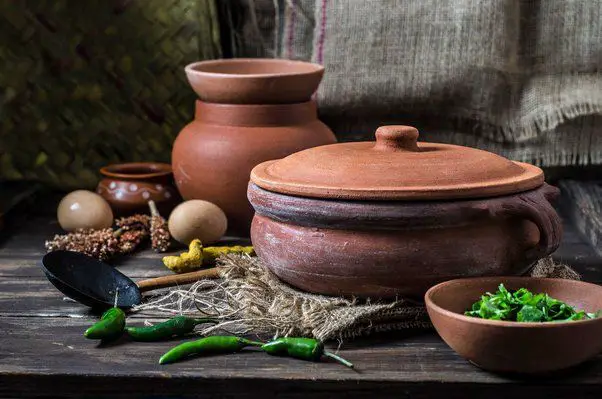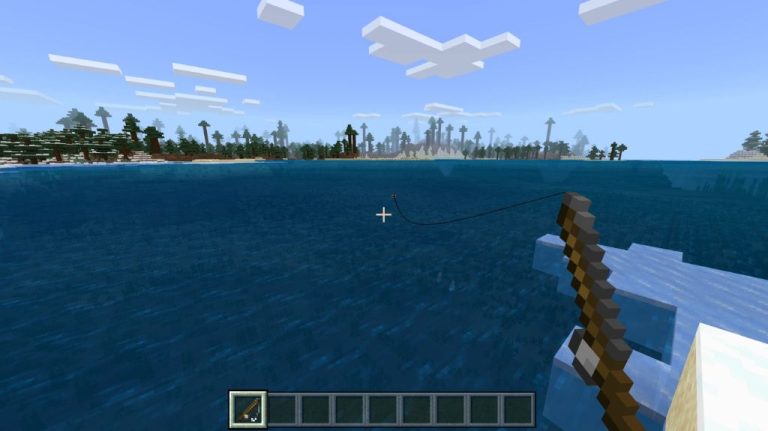How Do We Get Clay Soil?
What is Clay Soil?
Clay soil is a fine-grained soil that contains a high percentage of clay particles. It is distinguished from other soil types by its ability to retain moisture and nutrients. Clay soils are made up of over 25% clay, often 40-60%, and include only a small amount of sand and silt particles.
The clay itself consists of very small microscopic plate-shaped particles, typically less than 0.002 mm in diameter. This composition gives clay soil some unique properties. The plate-shaped clay particles cling together tightly, making clay soils dense and sticky when wet. The tiny size of the particles also leaves little space for air pockets within the soil. As a result, clay soils hold water well and drain slowly.
Due to the high clay composition, these soils are often heavy to work with. When dry, the dense clay can become very hard and crack. When wet, the clay becomes sticky and muddy. Clay soil’s fine particles also hold nutrients well, but those particles may bind nutrients so tightly that plants can’t access them. The small size of clay particles also means the soil has a larger total surface area exposed to weathering.
How Clay Forms
Clay soils are formed through the weathering and breakdown of rocks over long periods of time. The main minerals that create clay are feldspars and micas. Feldspars are the most abundant group of minerals in the earth’s crust and contain aluminum. As feldspars slowly weather, the aluminum they contain transforms into clay. Micas are another common mineral that contain aluminum and silicon that gradually breaks down into clay size particles.
The weathering process begins when rocks are exposed to the atmosphere and water. Over hundreds and thousands of years, the minerals in the rocks interact chemically with carbon dioxide, oxygen, and water. This causes the rocks to decompose and break apart into smaller and smaller pieces.
The small clay particles are then transported by water, glaciers, wind, and gravity. Streams and rivers transport clay particles and deposit them in lakes, marshes, and oceans where they eventually settle out of the water. This transportation and settling process concentrates clay deposits in certain areas. The extremely small size of clay particles is key, as this allows them to be moved long distances before settling out.
Factors that Influence Clay Formation
There are several factors that have the biggest influence in determining if a soil will become clay or not. The main factors are the parent material (type of rock), climate and rainfall, drainage patterns, and topography.
The parent material of a soil strongly influences its texture and clay content. Certain types of rocks like shale, granite, and basalt are more likely to break down into clay particles during weathering. Climate also plays a big role, since abundant rainfall helps break down rocks and minerals into finer particles. Cool, wet climates promote more clay formation compared to hot, dry regions.
Drainage patterns also affect clay content. Poorly drained soils allow clay particles to accumulate, while well-drained soils leach clays deeper into the soil profile. Lastly, topography impacts clay formation. Low, flat areas tend to collect fine clay materials, while elevated landscapes enable better drainage.
Major Clay Minerals
There are four major types of clay minerals that make up the composition of clay soils:
Kaolinite – This is the most common clay mineral. It is found in highly weathered soils and has a low cation exchange capacity. Kaolinite particles are relatively small in size compared to other clay minerals.
Montmorillonite – Montmorillonite has a high cation exchange capacity. It swells when wet and shrinks when dry. Montmorillonite is formed from the weathering of volcanic ash.
Illite – Illite is made up of small plate-like particles. It has an intermediate cation exchange capacity. Illite is formed from the weathering of micas.
Vermiculite – Vermiculite has a high cation exchange capacity and tends to swell when wet. It is formed by the weathering of magnesium and iron rich minerals.
Where Clay Soils are Found
Clay soils tend to be most prevalent in certain parts of the world. Some of the key areas where clay soils are commonly found include:
Tropical regions – The warm, wet climates of tropical areas promote rock weathering and clay formation. Intense rainfall leaches minerals from rock and transports the clay particles to accumulate in lower elevations. Many tropical regions, such as the Amazon Basin, have widespread clay soils.
Floodplains – River floodplains often contain a high proportion of clay soils. Flooding brings fine clay particles and deposits them on the land. Annual flood cycles continuously replenish the clay soils over time. The Nile River floodplain in Egypt is an example of an area with high clay content soils due to regular flooding.
Areas with acidic bedrock – Acidic rocks like granite tend to produce clay minerals upon weathering. Areas with granite bedrock that has chemically weathered, such as ancient shield regions of Canada and Scandinavia, often have clay-rich soils. The clays are residual accumulation from the long-term weathering of the bedrock.
Challenges of Clay Soils
Clay soils, while having some benefits, also come with some unique challenges that can make gardening and agriculture difficult.
One of the biggest issues with clay is poor drainage. The tiny, tightly packed clay particles make it difficult for water to penetrate and drain through the soil. This can lead to standing water or soggy conditions after rain or irrigation. Wet clay is sticky and compressible, which makes it challenging for plant roots to grow and access air pockets in the soil.
Another problematic characteristic of clay is its shrink-swell capacity. Clay soils expand when wet and shrink when dry. This cyclic change in soil volume can wreak havoc on buildings, roads, and underground pipes. It also constantly churns and compresses the soil, damaging plant roots and soil structure.
Clay soils tend to have low fertility due to the lack of organic matter and nutrient retention issues. Negatively charged clay particles bind tightly to positively charged nutrients like calcium, magnesium, and potassium, making them less available for plant uptake. Nitrogen is also quickly leached from clay soils due to the lack of organic matter to hold on to it.
Benefits of Clay Soils
Clay soils provide some key benefits that make them valuable for agriculture and other uses when properly managed. Here are some of the main advantages of clay soils:
Nutrient Retention
The small size of clay particles gives clay soils a large surface area. This allows clay soils to adsorb and retain nutrients like calcium, magnesium, and potassium. The nutrients stick to the clay surfaces and are released slowly over time for plant uptake.
Good Water Holding Capacity
The spaces between clay particles act as tiny reservoirs that can retain moisture. Clay soils soak up water and hold it for longer periods, providing a constant supply of water to plant roots.
High Cation Exchange Capacity
The negative charge of clay particles attracts and holds positively charged nutrients (cations). This high cation exchange capacity reduces nutrient leaching. Clay particles grab onto essential cations like calcium, magnesium, and potassium and prevent them from washing away.
Improving Clay Soils
Clay soils can be difficult to work with because they drain slowly and compact easily. However, there are several methods that can improve the structure and drainage of clay soils:
Add Organic Matter
Adding organic materials like compost, manure, leaf litter or cover crops to clay soils can help bind soil particles together and improve drainage. Organic matter opens up the structure of clay soils and provides food for helpful soil microbes.
Use Cover Crops
Planting cover crops like clover, rye and buckwheat in clay soils helps protect the soil when it would otherwise be bare. Their root systems help aerate the soil and replenish organic matter.
Deep Tillage
Tilling deeper than usual in clay soils can help break up compacted layers and allow water to infiltrate more easily. This may need to be done periodically to maintain the benefits.
Controlled Drainage
Using controlled drainage techniques like drainage tiles, raising the water table through subirrigation, and regulating water table depth can help improve productivity in clay soils. Proper drainage and moisture management is key.
Uses of Clay
Clay has been utilized by humankind for thousands of years due to its abundance and versatile properties. Some of the main uses of clay in modern times include:
Construction and Bricks
Clay is a vital material for construction, being an essential ingredient in bricks, cement and mortar. Bricks made of clay have been used globally since ancient times. Modern clay bricks are formidable building materials, as they are durable, fireproof, weather resistant, and effective for heat insulation. The optimal properties of clay bricks allow architects and builders to construct sturdy structures economically.
Pottery and Ceramics
Clay is indispensable for making pottery and ceramic ware. Its plasticity when wet makes it ideal for shaping into pots, plates, tiles, and sculptures. When fired at high temperatures, clay becomes permanently hard and takes on new properties, finding diverse applications in art, decoration and industry. From ancient amphorae to fine porcelain, many of humankind’s greatest artifacts have been fashioned from clay.
Drilling Fluids
Clays such as bentonite are a major component of drilling mud used to lubricate drill bits and shafts in the drilling of oil and gas wells. The viscosity and gel-forming nature of clay allows it to transport drilling spoils to the surface. Its plasticity helps seal walls of boreholes during drilling. Clays are also used to form protective filter cakes on borehole walls after drilling is completed.
Key Takeaways
Clay soils form over long periods of time from the gradual chemical weathering and breakdown of rocks containing minerals like feldspar, mica, and volcanic ash. The small particle size and plate-like structure of clay minerals give clay soils unique properties including density, slow permeability, and plasticity when wet.
The main properties of clay soils include:
- Slow drainage and water penetration due to small pore spaces
- High water retention capacity
- Difficult to work and easily compacted when wet
- Cracking when dry
- Prone to leaching of nutrients
- Slow warming in spring
Strategies for improving clay soils focus on adding organic matter like compost or manure to increase aeration and drainage. Other tips include:
- Add gypsum or calcium to improve structure
- Avoid working soil when very wet
- Plant deep-rooted species to help aerate soil
- Use raised beds for better drainage
- Test soil pH and add amendments like lime if needed


